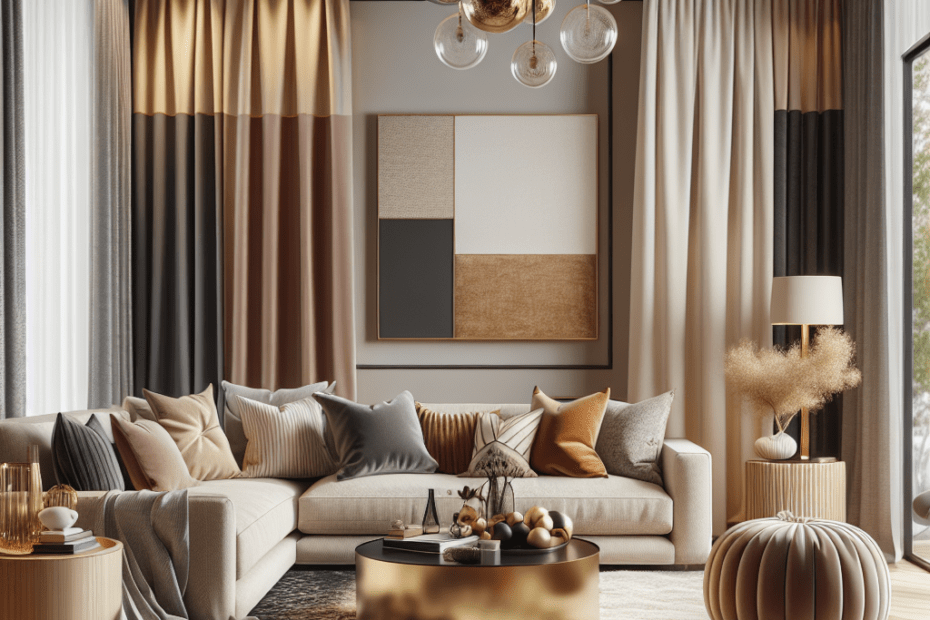“`html
Introduction
They often find themselves gravitating toward neutral tones when designing interiors because these palettes provide a calm and versatile background. However, incorporating bold colors in neutral rooms can significantly enhance the aesthetic appeal and mood of a space. By strategically applying vibrant hues, one can revitalize interiors, making them dynamic and engaging while still retaining the desirable qualities of a neutral palette.
Why Use Bold Colors in Neutral Spaces?
Using bold colors in neutral rooms offers a perfect balance of calmness and energy. According to the Source A, around 62% of homeowners experiment with bold color contrasts to create striking interiors because they add personality and character without overwhelming the senses.
Neutral rooms act as a canvas, allowing bold elements to stand out beautifully. The richness of colors like deep blues, vibrant reds, or dramatic greens can highlight focal points and add depth to room decor.
Strategies for Successfully Integrating Bold Colors
There are various strategies they might use to introduce bold colors into a neutral room:
Accent Walls
Painting an accent wall in a bold shade is an effective way to add drama and interest without a full commitment to color. They could enhance one side of the room with a rich hue to draw the eye or define a space.
Decorative Accessories
Adding accessories such as pillows, throws, or rugs in vivid shades can create pockets of contrast. This strategy is versatile and allows for seasonal updates.
Artwork and Wall Decor
They can use colorful artworks to introduce bold hues. Large canvases or gallery walls with pops of color can transform a neutral space into a vibrant room.
Furniture and Fixtures
Choosing furniture in bold shades or light fixtures with bright designs can break the monotony. A teal sofa or a ruby chair often becomes the centerpiece in a sea of neutrals.
| Element | Bold Color Idea |
|---|---|
| Walls | Accent Paint |
| Accessories | Cushions, Throws |
| Artwork | Vibrant Paintings |
| Furniture | Vivid Sofas, Chairs |
Psychological Impacts of Bold Colors
Colors aren’t just eye candy; they significantly affect mood and behavior. According to research, colors like yellow and orange evoke feelings of warmth and positivity, while blues and greens can bring a sense of calm and tranquility. Referencing the Source B, incorporating strategic color choices can foster productivity, enhance focus, and even boost happiness.
Maintaining Balance in Design
While introducing bold colors, it’s crucial they maintain visual equilibrium to prevent overwhelming the space. Here are some tips:
Proportion
Adopt the 60-30-10 rule, where 60% is the dominant neutral color, 30% is the secondary hue, and 10% is the bold accent. This approach ensures a balanced design.
Texture Variation
Incorporating different textures, such as a velvet cushion or a woven rug, in bold shades can add depth and interest while maintaining harmony in the decor.
Real-Life Examples
An inspiring example is a living room with white walls, where they have added turquoise cushions and a matching rug. Carefully chosen, these elements add excitement and personality without compromising the serene ambiance.
Key Takeaways
- Bold colors in neutral rooms add personality and character while maintaining a balanced atmosphere.
- Strategic placement, like accent walls and colorful accessories, enhances the room’s appeal.
- Balance between color and neutrality is key to a successful design.
- The psychological effects of colors can influence moods and emotions beneficially.
Frequently Asked Questions
- What is the benefit of using bold colors in neutral rooms?
Bold colors add interest, depth, and personality to neutral spaces without overwhelming them. - How can they incorporate bold colors without painting the whole room?
They can use accessories like cushions, throws, or a single accent wall in a bright hue. - How to choose the right bold color?
Consider the room’s functionality and the mood they want to create. Choose colors that evoke the desired emotions. - Can bold colors make small spaces look cluttered?
If used sparingly and strategically, they can make a space feel dynamic rather than cluttered. - Are there color trends they should follow?
While trends can provide inspiration, it’s more important to choose colors that suit their individual style and preferences.
“`
